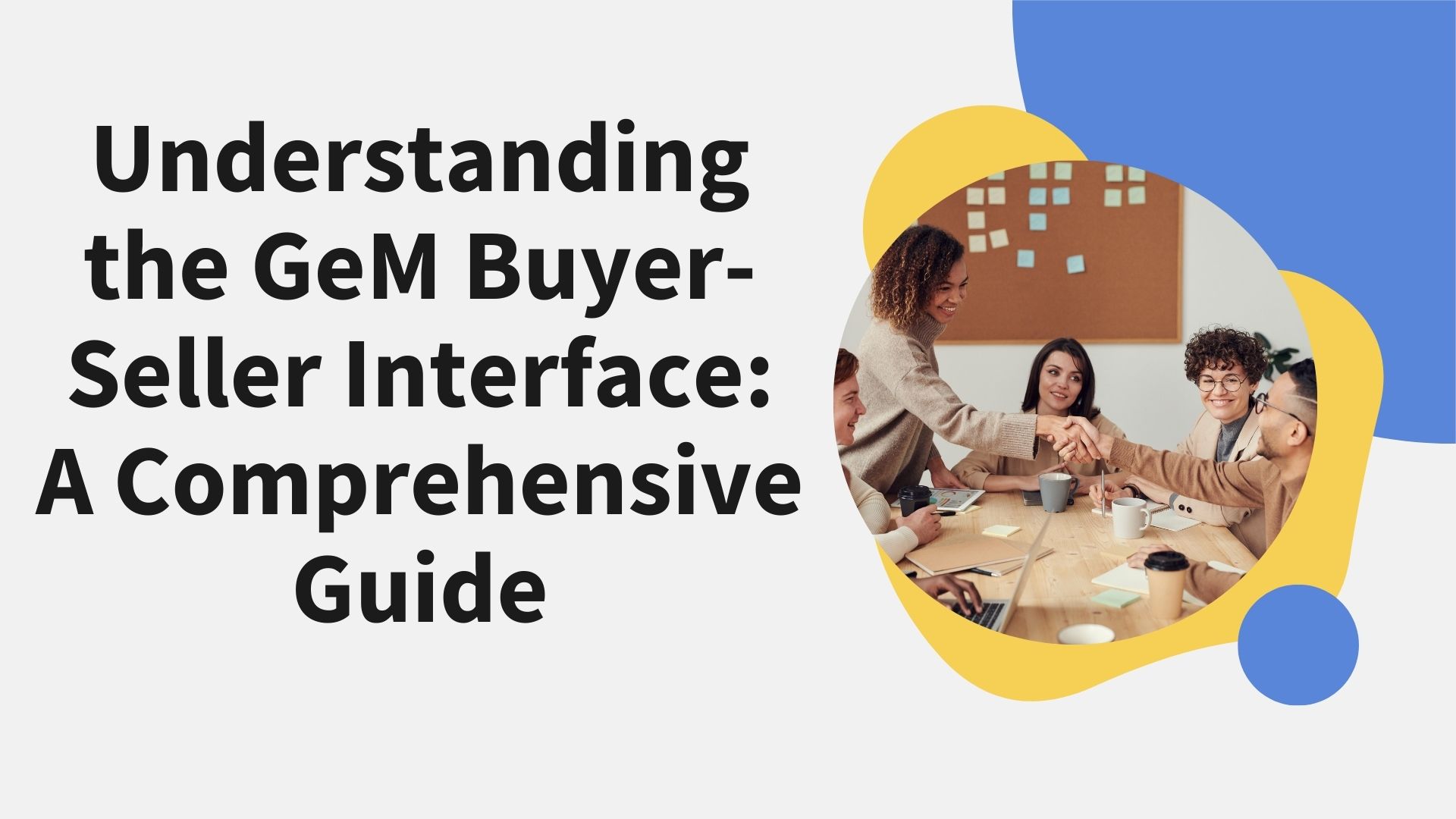The Government e-marketplace (GeM) has revolutionized public procurement in India by offering a seamless digital platform for buyers and sellers. Whether you’re a government department looking to procure goods or a seller offering products and services, understanding the GeM Registration Buyer-Seller Interface is crucial for success. This guide unpacks the platform’s features, functionalities, and benefits to help you navigate with confidence.
What is the GeM Buyer-Seller Interface?
The GeM Buyer-Seller Interface connects government buyers and registered sellers in a transparent, efficient, and paperless environment. Buyers, typically government departments or public sector undertakings, can directly procure goods or services. Sellers, on the other hand, gain access to a broad market of government buyers.
Key Features of the Interface
- User-Friendly Dashboard
- Buyers: Track procurement processes, manage catalogs, and access analytics for better decision-making.
- Sellers: Monitor orders, upload products, and manage inventory effortlessly.
- Search and Filter Options
- Advanced search capabilities allow buyers to find specific products or services.
- Sellers can identify trending demands and align their offerings.
- Integrated Payment System
- Secure and timely payments are ensured through a digital payment gateway integrated into the platform.
- Real-Time Notifications
- Alerts for bids, orders, or required approvals are sent in real-time, ensuring quick responses.
- Support and Training Tools
- Both buyers and sellers can access FAQs, user manuals, and training videos to enhance their platform experience.
Buyer Perspective: Navigating the Interface
- Registration and Login
Buyers need to register using official credentials. Once logged in, they can access tools like vendor selection and e-bidding. - Procurement Processes
- Direct Purchase: For goods and services under ₹25,000.
- Bidding and Reverse Auction: For high-value procurements, ensuring competitive pricing.
- Monitoring Orders
Track the delivery status, payment milestones, and vendor performance through detailed reports. - Communication Tools
The platform facilitates seamless communication between buyers and sellers, reducing misunderstandings and ensuring clarity.
Seller Perspective: Leveraging the Interface
- Registration and Onboarding
Sellers must register with valid business details, GSTIN, PAN, and bank information. Once verified, they can start listing products. - Catalog Management
- Upload high-quality images and descriptions to attract buyers.
- Keep pricing competitive and updated to stay relevant.
- Order Fulfillment
- Ensure timely delivery and adhere to contract specifications.
- Track order details and resolve disputes using the platform’s built-in grievance mechanism.
- Performance Metrics
Sellers can access data on sales trends, customer feedback, and order performance to improve their offerings.
Benefits of the GeM Buyer-Seller Interface
- Transparency and Accountability: Every transaction is recorded and auditable, reducing corruption and inefficiency.
- Ease of Doing Business: Simplified procurement processes save time for both parties.
- Market Expansion: Sellers get unparalleled access to government buyers, opening up significant business opportunities.
- Cost-Effectiveness: Competitive bidding ensures fair pricing for buyers while maintaining profitability for sellers.
Tips for Success
For Buyers:
- Clearly define requirements to get the best responses from sellers.
- Use analytics tools to track procurement budgets and identify cost-saving opportunities.
For Sellers:
- Regularly update your catalog with new products and services.
- Respond promptly to inquiries and maintain high service standards to earn positive feedback.
Common Challenges and How to Overcome Them
Despite the many advantages of the GeM Buyer-Seller Interface, users may encounter certain challenges. Here’s a look at common issues and tips to overcome them:
Challenges for Buyers:
- Product Comparisons
- Difficulty in comparing products from multiple vendors due to varying specifications.
- Solution: Use the advanced filtering options and request clarifications from sellers to ensure clarity.
- Vendor Reliability
- Ensuring that vendors meet quality standards and delivery timelines.
- Solution: Rely on vendor ratings and past performance metrics provided on the platform.
- Budgetary Constraints
- Limited budgets can restrict options for procurement.
- Solution: Utilize reverse auction tools to ensure competitive pricing within budget limits.
Challenges for Sellers:
- Catalog Visibility
- Standing out in a crowded marketplace can be challenging.
- Solution: Optimize your product descriptions with relevant keywords and high-quality images. Participate actively in bids to gain visibility.
- Order Processing Delays
- Delays in responding to buyer inquiries or order requests can impact performance ratings.
- Solution: Set up automated alerts and dedicate resources for prompt communication and fulfillment.
- Payment Delays
- Although the platform offers secure payment methods, occasional delays may occur.
- Solution: Monitor payment schedules regularly and use the grievance mechanism for resolution if necessary.
The Role of Technology in Enhancing the GeM Interface
The GeM Buyer-Seller Interface leverages cutting-edge technologies to deliver a seamless experience. Some notable innovations include:
- AI and Machine Learning
- Personalized recommendations for buyers based on procurement history.
- Predictive analytics for sellers to anticipate demand trends.
- Blockchain Integration
- Enhances security and transparency in transactions by creating an immutable record of all activities.
- Mobile Application
- Enables users to manage their accounts, bids, and orders on the go, increasing flexibility and efficiency.
- Data Analytics
- Buyers can analyze procurement patterns to optimize spending.
- Sellers can track market trends and refine strategies to remain competitive.
Why Choose the GeM Platform?
For government buyers, the GeM platform ensures compliance with procurement guidelines while reducing administrative overhead. For sellers, it opens doors to a vast, reliable market. Here’s a quick summary of its unmatched benefits:
- For Buyers:
- Streamlined procurement process.
- Access to verified vendors.
- Real-time updates on the procurement cycle.
- For Sellers:
- Direct access to government departments.
- Improved payment security.
- Tools to enhance brand visibility and reputation.
Note: Now easily list your product on the gem portal through gem catalogue service.
Conclusion
The GeM Buyer-Seller Interface is a powerful tool for fostering a transparent and efficient procurement ecosystem in India. By understanding its features and best practices, both buyers and sellers can maximize their potential and contribute to the vision of Digital India. Whether you’re streamlining procurement or scaling your business, the GeM platform offers an unmatched opportunity for growth and collaboration.
